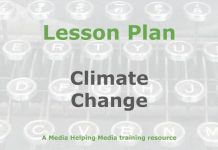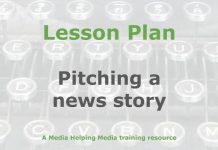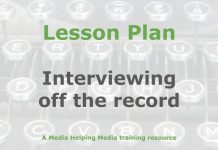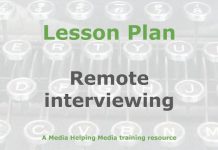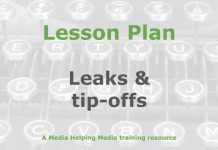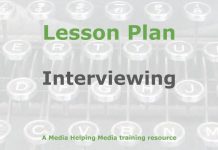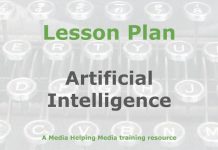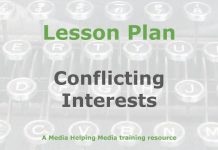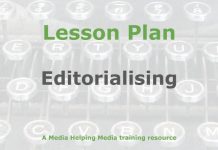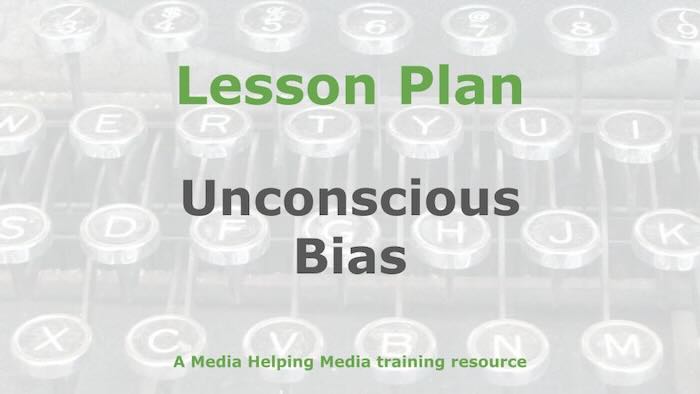 This lesson plan is is designed to help students recognise their own unconscious bias and find ways to avoid bias in their journalism.
This lesson plan is is designed to help students recognise their own unconscious bias and find ways to avoid bias in their journalism.
It’s based on the article ‘Unconscious bias and its impact on journalism‘. We recommend journalism trainers read and understand the article before adapting the material below for your own purposes.
Learning objective
Students will identify and analyse different types of unconscious bias, such as affinity, confirmation, anchor, and bandwagon bias, in various scenarios. They will evaluate strategies to mitigate these biases in their work.
- Student-facing objective: By the end of this lesson a student will be able to spot different types of unconscious bias and figure out ways to reduce their impact in their work.
- Standards: Students will be able to recognise bias and be able to deal with it in their work.
Learning activities
Warm-up
Begin with a brief discussion on the concept of perception. Ask students to think about a time when their first impression of someone or something was later proven wrong. Encourage them to share examples with a partner. After a few minutes, invite a few students to share their stories with the class. Highlight how initial perceptions can be influenced by various factors, setting the stage for understanding bias. This activity primes students to explore how unconscious biases can shape perceptions and decisions.
Direct instruction
- Introduce bias types: Present the four types of unconscious bias: affinity, confirmation, anchor, and bandwagon. Use real-world examples to illustrate each. For instance, describe a scenario where a hiring manager favours a candidate from their educational or community background (affinity bias) or a journalist who only seeks sources that confirm their existing beliefs (confirmation bias).
- Analyse bias iImpact: Discuss how these biases can affect decision-making and lead to unfair outcomes. Use a case study approach. Present a scenario where a news outlet’s reliance on initial reports (anchor bias) led to misinformation. Ask students to identify the bias and its consequences.
- Mitigation strategies: Explain strategies to counteract unconscious bias. Highlight techniques such as perspective-taking and counter-stereotyping. Use a role-play activity where students practice flipping a situation to see it from another viewpoint. Discuss how these strategies can be applied in journalism and other fields to ensure fair and accurate reporting.
Guided practice
Think, Pair, Share: Guide students through a structured discussion to identify and analyse bias.
- Think: Ask students to individually reflect on a recent news article or media piece they encountered. Have them identify any potential biases present, considering the types discussed (affinity, confirmation, anchor, bandwagon).
- Pair: Instruct students to pair up and share their reflections. Encourage them to discuss the biases they identified and how these might have influenced the content or perspective of the piece.
- Share: Facilitate a class discussion where pairs share their findings. Highlight diverse examples and encourage students to connect these to the bias types.
- Analyse: As a class, analyse one example in depth. Identify the bias, its impact, and discuss possible mitigation strategies. Encourage students to suggest how the piece could be improved to reduce bias.
- Reflect: Conclude with a brief reflection. Ask students to consider how awareness of bias can influence their own media consumption and decision-making.
Independent practice
- Bias identification: Provide students with a set of short articles or media excerpts. Instruct them to identify and annotate any biases present, using the types discussed (affinity, confirmation, anchor, bandwagon).
- Bias mitigation: Ask students to choose one identified bias and write a brief plan on how they would address and mitigate it. Encourage them to use strategies like perspective-taking or counter-stereotyping.
- Reflection Have students write a short reflection on how recognising bias can impact their personal and academic work. Prompt them to consider how they might apply these insights in future scenarios.
Circulate to support students as needed.
Assignment
Ask students to answer these questions:
- What is one type of unconscious bias you identified today?
- How can awareness of bias improve decision-making in journalism?
- What’s one question you still have from today’s lesson?
Here are some suggested answers:
- Suggested answer to Question 1: Affinity bias, confirmation bias, anchor bias, or bandwagon bias.
- Suggested answer to Question 2: Awareness of bias helps ensure decisions are based on facts and diverse perspectives, reducing unfair outcomes.
Teacher resources
Differentiation guide
- Advanced learners: Encourage deeper analysis by having students explore additional types of bias not covered in the lesson. Challenge them to research and present on biases like status quo bias or halo effect. Facilitate a debate on the implications of these biases in media and journalism.
- Striving learners: Simplify the content by focusing on two types of bias, such as affinity and confirmation bias. Use more relatable examples and provide graphic organisers to help them categorise and understand each bias. Offer additional support through guided discussions and one-on-one check-ins.
- Background reading: We recommend you read the article ‘Unconscious bias and its impact on journalism‘ before adapting the this learning plan for your own purposes.
Notable definitions
- Bias: A prejudice or favour for or against an individual or group, often leading to unfair judgements.
- Unconscious bias: Bias that occurs without conscious awareness, affecting decisions and perceptions.
- Affinity bias: Favouring people who are similar to oneself, often leading to preferential treatment.
Required materials
- Whiteboard and markers
- Projector and screen
- Printed case studies or scenarios
- Copies of short articles or media excerpts
- Reflection journals or notebooks
- Pens or pencils
Lesson summary
- Warm-up
- Direct instruction
- Guided practice
- Independent practice
- Assignment
The free teaching tools at the Khan Academy were used as a basis for converting the original article into a lesson plan.
Related article
